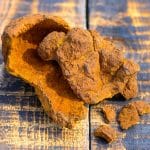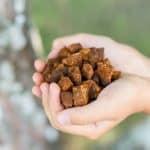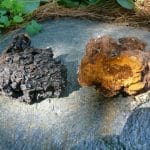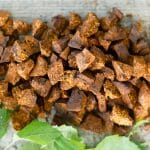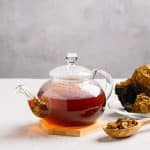The Chaga mushroom is a fungus that grows primarily on birch trees in cold climates. Chaga is a fungus that grows naturally mainly on birch trees in cold climates such as Canada, Siberia, Scandinavia, and parts of the United States. Chaga (Inonotus obliquus) is a fungus that grows primarily on birch bark in cold climates such as northern Europe, Siberia, Russia, Korea, northern Canada and Alaska.
A parasitic fungus, this fungus infects birch trees in northern hemisphere deciduous forests and thrives in colder climates. Chaga (Inonotus obliquus) is an edible herbaceous mushroom widely distributed in temperate and frosty regions of the Northern Hemisphere, especially in the Baltic and Siberia. Chaga (Inonotus obliquus)
Chaga mushroom and similarities with plant compounds
Over the past decade, herbalists have increasingly used medicinal mushrooms in clinical practice. Physicians, alternative medicine advocates, and researchers are increasingly interested in the potential health benefits of chaga (Inonotus obliquus) and chaga (Inonotus obliquus).
Laboratory and animal studies have shown that extracts of this mushroom have potential anti-inflammatory, anti-cancer effects, powerful antioxidants, and many other beneficial compounds. Chaga mushroom tea and extracts are marketed for their antioxidant and immune-boosting effects, which are primarily demonstrated by in vitro and in vivo studies. Bioactive compounds isolated from Chaga include polysaccharides, terpenoids, lignans, as well as oxalic, gallic, protocatechuic and p-hydroxybenzoic acids. Chaga is rich in antioxidants, chemicals that help prevent cellular damage caused by free radicals or oxidants.
Additionally, a cup of Chaga tea is rich in antioxidants. The most affordable way to make Chaga tea is to use a high-quality pure Chaga extract, such as powdered Royal Chaga Extract. Since birch wood naturally contains many of the medicinal compounds found in Chaga, we can leverage this knowledge by using birch bark in medicine while preserving the Chaga mushroom. The betulinic acid found in wild Chaga is actually a derivative of betulin alcohol, a compound found in birch trees that is completely absent in cultivated Chaga, which does not grow on birch trees.
Its precursor and betulinic acid are found in the birch bark where Pilate grows and have shown powerful antioxidant, antiulcer, antigastritis and immunomodulatory effects. Growing chaga in a natural environment can consume wood, which provides the fungus with the nutrition and metabolites needed to produce healthy and strong mushrooms rich in compounds beneficial to human health. The reason for this is that many of the beneficial compounds in this fungus are only formed due to the parasitic relationship between chaga and the host tree, most commonly the birch.
Since the outer part of the chaga we harvest is not the body of the fruit, it does not contain spores that we can simply use to start growing more mushrooms. The chaga mushroom must be harvested from nature (harvested from nature, not farmed) to contain all the active compounds that chaga is known for. The fairly common birch tinder fungus (Fomitopsis betulina) contains many of the same medicinal compounds as chaga, especially triterpenes.
Therefore, it is not surprising that mushroom enthusiasts traverse birch forests every year in search of chaga, and while there is no evidence that Inonotus obliquus populations are declining, it is possible to accurately predict what effects this type of fungus can cause. the fungus itself, but also about its host tree and, possibly, the entire ecosystem.
You can find our favorite capsules, powders, and tincture’s on the following pages of our website and learn more about each individually:
Best Chaga Mushroom Supplement
Additional Resources:
Can you put chaga mushroom powder in coffee?
Chaga mushroom as a natural immunity booster
Updated 10/24/2022







